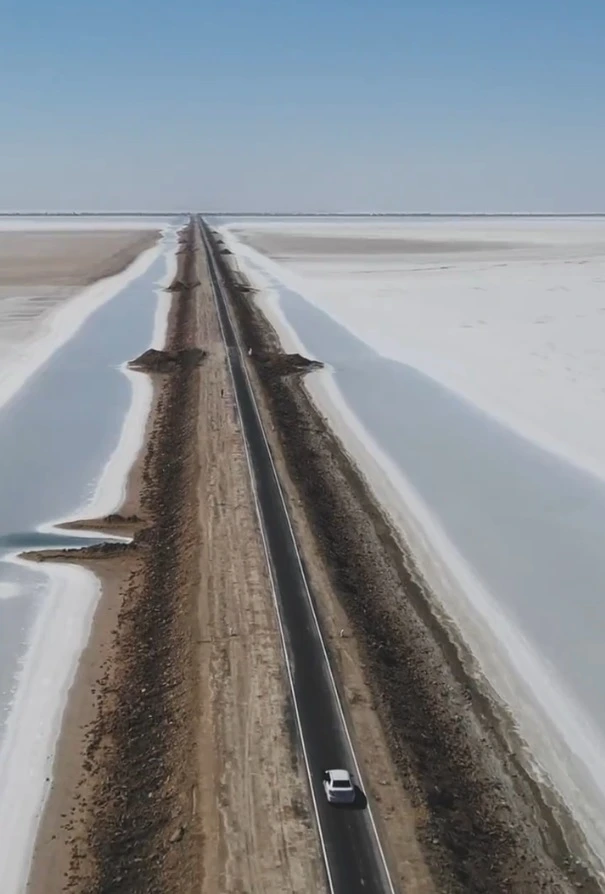A video of Dholavira Highway – better known as ‘the road to the heaven’ – in Gujarat’s Rann of Kutch has taken the internet by storm on Saturday.
The video shared by the Ministry of Tourism showed a car passing through the Lake of Kutch on the approximately 30-kilometre-long highway linking Khavda to Dholavira.
“Experience a heavenly drive on the Dholavira Highway, famously known as “The Road to the Heaven”. Behold the captivating #RannOfKutch Lake, shimmering on both sides, offering picturesque views of crystal-clear waters, gleaming salt beds, and boundless blue skies,” said the text accompanying the video.
Experience a heavenly drive on the Dholavira Highway, famously known as “The Road to the Heaven”. Behold the captivating #RannOfKutch Lake, shimmering on both sides, offering picturesque views of crystal-clear waters, gleaming salt beds, and boundless blue skies. pic.twitter.com/uVgTWgwzlr
— Incredible!ndia (@incredibleindia) May 6, 2023
Dholavira, the Harappan city in the Rann of Kutch, was inscribed on UNESCO’s World Heritage list in 2021 after being on the tentative list since 2014. It is one of the very few well-preserved urban settlements in South Asia dating from the 3rd to mid-2nd millennium BCE.
Known locally as Kotada meaning large fort, Dholavira sprawls over 100 hectares of semi-arid land at the north-west corner of the island of Khadir, one of the islands in the Great Rann of Kutch that remain above the flood-plains in months when the rest of the desert is submerged by the monsoon.
Here is a view to make your Sunday better!
A surreal drive through the Khavda -Dholavira highway (SH-45) aka the Heaven Road will take you to Khadir Bet island where Dholavira welcomes you.
VC: being_photographerr (Instagram)@GujaratTourism#DekhoApnaDesh
(1/3) pic.twitter.com/npgKflmMqf
— Incredible!ndia (@incredibleindia) November 13, 2022
The site was unearthed by the Archeological Survey of India (ASI) in 1967 but has been systematically excavated only since 1990. It is home to one of the world’s oldest water conservation systems. Satellite images show an underground reservoir and a rainwater collection system stretching from the city walls, without which the town would not have flourished in the desert’s scarce rainfall.
Being the 6th largest of more than 1,000 Harappan sites discovered so far, and occupied for over 1,500 years, Dholavira not only witnessed the entire trajectory of the rise and fall of the early civilization of humankind but also demonstrated its multifaceted achievements in terms of urban planning, construction techniques, water management, social governance and development, art, manufacturing, trading, and belief system.
Absolutely delighted by this news.
Dholavira was an important urban centre and is one of our most important linkages with our past. It is a must visit, especially for those interested in history, culture and archaeology. https://t.co/XkLK6NlmXx pic.twitter.com/4Jo6a3YVro
— Narendra Modi (@narendramodi) July 27, 2021
“With extremely rich artefacts, the well-preserved urban settlement of Dholavira depicts a vivid picture of a regional centre with its distinct characteristics that also contribute significantly to the existing knowledge of Harappan Civilization as a whole,” says the tourism ministry.
Dholavira is about 250 km from Bhuj and is reached via Bhachau and Rapar. The state capital of Ahmedabad, meanwhile, is 335 kilometres from Bhuj.




















